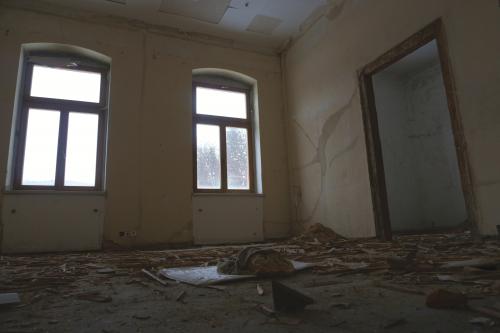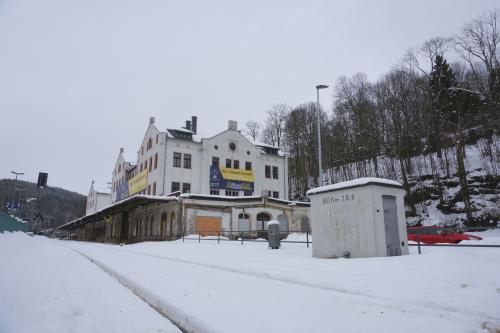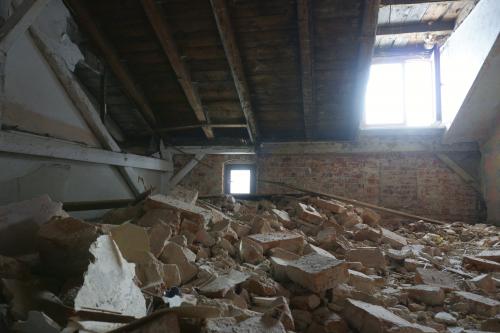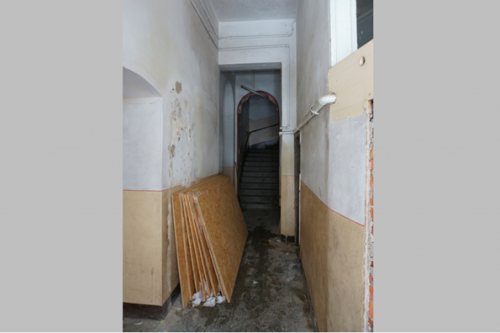Am 28.07.2021 ist der SRCC im Tech Report Autonome Systeme des ACStyria Mobilitätsclusters erschienen.
In dem unten stehenden Dokument können Sie den Bericht kostenfrei lesen.
Am 28.07.2021 ist der SRCC im Tech Report Autonome Systeme des ACStyria Mobilitätsclusters erschienen.
In dem unten stehenden Dokument können Sie den Bericht kostenfrei lesen.
Unterer Bahnhof in Annaberg-Buchholz wird komplett erschlossen
Maßnahmen bis Ende August – Zugang zum Bahnsteig gewährleistet
Seit Anfang dieses Jahres tut sich einiges am Unteren Bahnhof – Abriss, lautes Hämmern und Schüttgeräusche, fleißige Bauarbeiter, die im Gebäude des nördlichen Kopfbaus täglich werkeln. Containerweise Schutt, teilweise auch Inventar und Hinterlassenschaften aus längst vergangenen Zeiten werden herausgetragen und entsorgt.
Die Entkernungsarbeiten am nördlichen Kopfbau des Bahnhofsgebäudes am Unteren Bahnhof in Annaberg-Buchholz sind in vollem Gange. Nun wurde auch bereits mit den Arbeiten zur Erschließung des gesamten Bahnhofsgeländes begonnen. Damit verbunden sind die Heranführung der Medien, Trinkwasser, Gas, Strom und Telekommunikation für das gesamte Areal. Weiterhin werden erforderliche Kanäle für die Regen- und Schmutzwasserentsorgung verlegt.
Mit diesen Maßnahmen wird die Grundlage zur weiteren Entwicklung des Forschungscampus in Bezug auf die Infrastruktur geschaffen. Die Erschließungsarbeiten werden voraussichtlich noch bis Ende August 2021 andauern. Der Zugang zum Bahnsteig ist innerhalb dieses Zeitraums jedoch immer gewährleistet. Die Stadt sowie die Ver- und Entsorgungsträger investieren in diesen Zukunftsstandort ca. 320.000,- € im Rahmen der Erschließung.
Die Gesamtkosten der Sanierung des nördlichen Kopfbaus werden rund 4.260.000.- € betragen. Im Rahmen des Förderprogramms Integrierte Stadtentwicklung des europäischen Fonds für regionale Entwicklung (EFRE) wurde der Stadt eine Zuwendung in Höhe von 2.472.000.- € dafür zugesagt. Bedingung: Die komplette Sanierung muss im bewilligten Förderzeitraum, das heißt bis zum 20.06.2022, fertiggestellt sein.
Rückblickend wurde im Jahr 2020 der Bahnhofsplatz zur Mobilitätsschnittstelle umgestaltet und nunmehr folgt die Beseitigung des baulichen Missstandes am Bahnhofsgebäude.
Die Sanierung dient der Etablierung einer Außenstelle der Technischen Universität Chemnitz, welche wichtiger Bestandteil des Bahnforschungscampus in Annaberg-Buchholz sein wird.
Des Weiteren wird die regionale, zentrale Kontaktplattform für das Partnernetzwerk des Smart Rail Connectivity Campus, kurz SRCC, im Dachgeschoss des Bahnhofsgebäudes untergebracht sein. So wird es am Standort zukünftig möglich sein, sowohl Workshops als auch Forschungsarbeiten und Versuche direkt durchzuführen.
Auch die österreichische Firma Frauscher Sensortechnik wird als erstes Unternehmen zum Zwecke der Forschung für das automatisierte Bahnfahren Räume im nördlichen Trakt des Bahnhofsgebäudes mieten.
Alle damit in Verbindung stehenden Aktivitäten sowie die Planung der weiteren Bauabschnitte bieten die große Chance, nachhaltigen Strukturwandel in der Region zu vollziehen, Arbeitsplätze zu schaffen und somit die Weichen für eine erfolgreiche Zukunft der Stadt und der Bürgerschaft zu stellen.
Quelle: Annett Flämig, Pressestelle Stadt Annaberg-Buchholz
Der nördliche Kopfbau am Unteren Bahnhof (Fotos: Thomas Proksch)
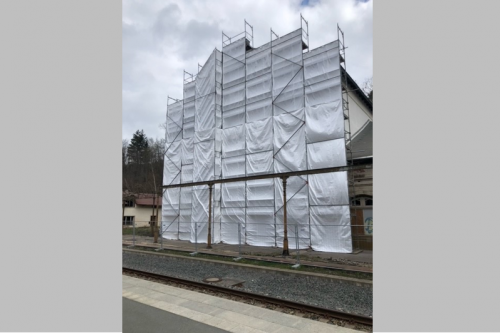
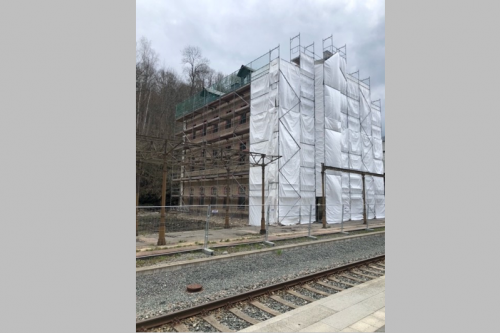
People usually associate the future of automated driving with cars and maybe trucks and buses. But as Hardy Graupner reports from Annaberg in Germany, the technology is also making inroads into railroad traffic.
When Sören Claus talks about the project he heads as chief technical officer from his modest office in Annaberg-Buchholz, his eyes start to shine. To outsiders, his Smart Rail Connectivity Campus (SRCC) may sound a tad too technical — to Claus it’s nothing less than the stuff that rail traffic’s digital future in Europe is made of.
It doesn’t happen very often that the Saxon town of Annaberg in the Erzgebirge mountains close to the German-Czech border gets the attention of people dealing with next-generation mobility issues. But for a couple of years, it’s no doubt been piquing the interest of researchers and businesspeople alike, at least ever since Europe’s first fully digital rail switch tower was inaugurated there on a stormy night in January 2018.
This signal box is an integral part of the SRCC project pursued jointly by German rail operator Deutsche Bahn, the town of Annaberg-Buchholz and the Chemnitz University of Technology. The rail campus has already attracted well over 150 partners from the science and business communities, above all small- and medium-sized enterprises.
What’s brought them here is a unique railroad test track where they can work on digital control and safety systems for rail traffic, environmentally friendly train propulsion technologies, artificial intelligence (AI) and the use of the fifth-generation mobile data transmission standard (5G).
SRCC technical chief Claus says the first 5G radio mast along the test track between Annaberg and Schwarzenberg went up in 2019. It saw the town mark a world first as Vodafone employees navigated a driverless engine from French conglomerate Thales via 5G data transmission on a small stretch of the test track. Every bit of the controlling process happened in real time — the engine’s acceleration, braking maneuvers and nonstop visual track control.
A lot more 5G radio masts are to be set up shortly.
“I estimate that about 30 of these are required for the whole 24-kilometer (15-mile) route, which is turning into Europe’s largest 5G research network,” Claus tells DW. “The 5G transmission standard is necessary for real-time monitoring of train traffic and safe digital control systems, which will eventually also be used for high-speed ICE trains.”
Professor Uwe Götze is vice president of the Chemnitz University of Technology. He says it didn’t take much persuading to win over his university as the rail campus’ major research partner.
“It was clear to us that the test track is a universal selling point, together with the digital switch tower. We were also aware of the research that people on the ground had done very early together with Siemens and Deutsche Bahn,” Götze tells DW. “At our university, we focus on resource-efficient production, smart systems and the interface between humans and technology, so the SRCC is a perfect match for us.”
The testing ground is expected to help speed up Deutsche Bahn’s railroad digitization drive and do away with a problem inherited from the past. Parts of the rail network work with incompatible signaling technologies, which is also a remnant from when the country was divided. Establishing a common digital standard everywhere would enhance the network’s reliability and overcome current maintenance problems.
“Such a test track with the infrastructure already in place and that yet to be added to it is pretty unique in Europe, not to mention the number of renowned business and research partners of the campus,” Götze points out. “The project has a big potential as it aspires to advance AI, sensor technology, communications technology and materials testing, to name but a few fields. The range of technology fields to deal with is enormous.”
Deutsche Bahn board member Ronald Pofalla has been pinning high hopes on the Smart Rail Connectivity Campus. “What’s being tested in the Erzgebirge mountains right now is the blueprint for rail traffic’s future across Germany,” he said in a statement released in January this year.
And German Transport Minister Andreas Scheuer, whose ministry has provided funding for the project, is convinced that the mountainous and winding test track flanked by dense forests is ideal for experiments. “It’s the perfect place to test modern rail and mobile communications technologies,” the minister said in a press release in January.
But why is it such a big challenge to develop technologies for automated railroad traffic when routes are predefined by the rails anyway? SRCC technical chief Sören Claus explains:
“We already have automated driving on railroad tracks: Take the subway in Nuremberg or Paris. But there we’re talking about closed systems where the tracks — apart from the small stretches at the stations — are not accessible for everyone,” Claus says.
“Out in the open, the digital control systems have to closely monitor the surroundings along the routes, including railroad crossings, and they have to reliably detect any potential obstacles such as fallen trees or children on the tracks. The systems also have to differentiate between what are real obstacles such as fallen trees and children on the tracks and, say, fog and shadows.”
Not that much different from the challenges of autonomous driving on roads then, it appears. Uwe Götze points out that his university will have a research and training unit of its own in Annaberg soon, saying it’s important to accompany developments where they happen:
“We’ve learned during the pandemic that a lot of things can actually be done from home, but there are also things where your presence on the ground is required and desirable,” Götze argues. “Just think of equipping the new train lab and carrying out measurements on the test track. And let’s not forget the exchange of views with partners on the ground,” he adds.
Indeed, research on the ground in Annaberg is meant to help improve the way railroad traffic will be controlled in the future as technology that’s partly over a 100 years old gets replaced. But that’s a gradual process, Claus insists:
“You can only do this step by step. Otherwise we would have to close down the whole national rail network for eight years or so and build everything from scratch, but that’s no option of course. All in all, though, making rail routes fully digital is nothing short of a technological revolution.”
Quelle: https://www.dw.com/en/saxony-where-smart-rail-connections-are-not-just-a-dream/a-56741084
Presseartikel in der Freien Presse am 22.02.2021
Am 22.02.2021 ist in der Freien Presse der Artikel „Unterer Bahnhof in Annaberg-Buchholz wird ab Mitte Mai zum Campus umgebaut“ erschienen. Der Autor beschreibt den Verlauf der Bauarbeiten und gewährt einen Blick in die Zukunft des Smart Rail Connectivity Campus. Unter folgendem Link ist der Artikel abrufbar.
Bildquelle: Annett Flämig (Pressesprecherin Große Kreisstadt Annaberg-Buchholz)

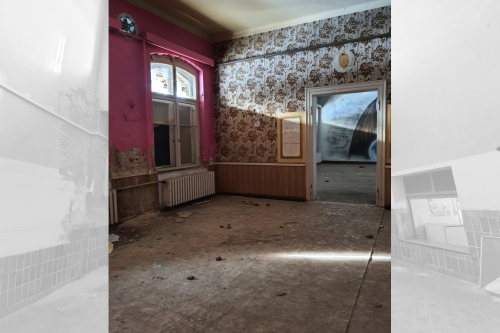
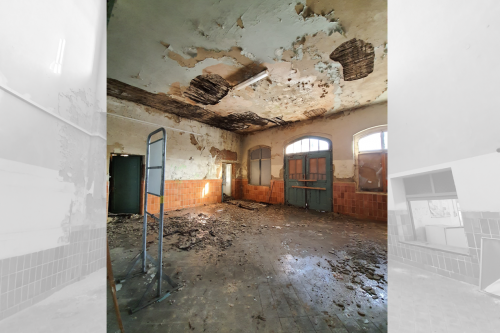
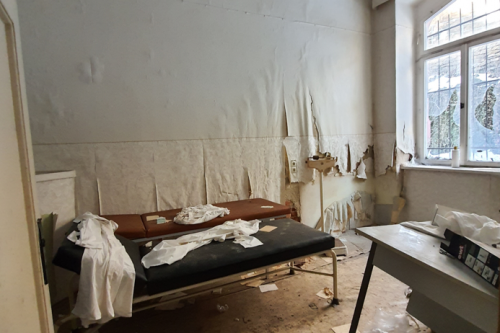
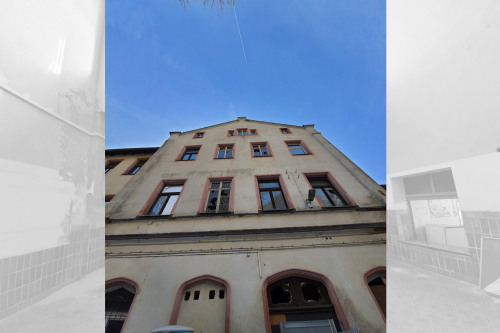
Die Verwandlung des Unteren Bahnhofs in Annaberg-Buchholz
Die Entkernungsarbeiten am nördlichen Kopfbau des Bahnhofsgebäudes Unterer Bahnhof in Annaberg-Buchholz haben in dieser Woche begonnen. Nachdem im Jahr 2020 der Bahnhofsplatz zur Mobilitätsschnittstelle umgestaltet werden konnte, folgt nunmehr die Beseitigung des baulichen Missstandes am Bahnhofsgebäude. Im Rahmen des Förderprogramms Integrierte Stadtentwicklung des europäischen Fonds für regionale Entwicklung (EFRE) wurde der Stadt eine Zuwendung in Höhe von 2.472.000.- € zugesagt.
Die Gesamtkosten der Sanierung des nördlichen Kopfbaus werden rund 4.260.000.- € betragen. Dabei muss diese im bewilligten Förderzeitraum bis zum 20.06.2022 fertiggestellt sein. Doch nicht nur in der Bausubstanz geht es darum, Altes durch Neues zu ersetzen. Mit diesem ehrgeizigen Vorhaben beschreitet die Stadt Annaberg-Buchholz ebenfalls inhaltlich neue Wege.
Die Sanierung dient der Etablierung einer Außenstelle der Technischen Universität Chemnitz, welche wichtiger Bestandteil des Bahnforschungscampus in Annaberg-Buchholz sein wird. Des Weiteren wird die regionale, zentrale Kontaktplattform für das Partnernetzwerk des Smart Rail Connectivity Campus, kurz SRCC, im Dachgeschoss des Bahnhofsgebäudes untergebracht sein. Sören Claus, Geschäftsführer der SRCC gGmbH, freut sich bald die Arbeit in den neuen Räumlichkeiten aufnehmen zu können. „Zukünftig wird es möglich sein, sowohl Workshops als auch Forschungen und Versuchsstrecken direkt am Standort durchzuführen“, so Claus. Ebenso betont er, dass Neumitglieder im Verein des SRCC e.V. jederzeit herzlich willkommen sind. Passende Beitrittsunterlagen können auf der Webseite https://www.smart-rail.cc/de/verein heruntergeladen werden.
Die Firma Frauscher Sensortechnik aus Österreich mietet als erstes Unternehmen zum Zwecke der Forschung für das automatisierte Bahnfahren Räume im nun beginnenden Bauabschnitt. Die entsprechenden Mietverträge sind bereits abgeschlossen oder stehen kurz vor der Unterzeichnung.
Alle damit in Verbindung stehenden Aktivitäten bieten die große Chance, nachhaltigen Strukturwandel in der Region zu vollziehen. Auch die nächsten Bauabschnitte sind schon in Planung. So möchte die DB Netz AG im zweiten Abschnitt ein digitales Schulungszentrum einrichten.
Für den 3. Bauabschnitt des südlichen Kopfbaus sind Bundesmittel zur weiteren Etablierung des Innovationszentrums in Verbindung mit der Teststrecke in Aussicht gestellt worden. Damit sollen weitere Netzwerkpartner unmittelbar am Standort ihre Forschung betreiben können.
Im Auftrag,
Annett Flämig
(Pressestelle Annaberg)
